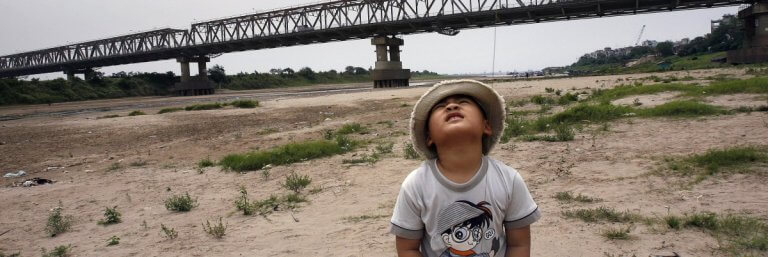
School children now lead the advocacy for action on climate change. Greta Thunberg, a 16-year-old Swede and global climate activist, made headlines this year when she chose to skip school to protest decades of political inaction on the issue. In Davos this January at the World Economic Forum, she delivered this scolding message:
“Adults keep saying, ‘We owe it to the young people to give them hope’. But I don’t want your hope. I don’t want you to be hopeful. I want you to panic. I want you to feel the fear I feel every day. And then I want you to act.”
New research has provided more proof that her anger and urgency are well-placed.
[hybrid_insta url=’https://www.instagram.com/p/BvHYDuJhMAv/’]
The research concluded that extreme climate changes in the global tropics can make it hard for children to attain a secondary school education. Extreme heat and precipitation in prenatal and early childhood years in these regions negatively impact everyone, even those from richer households, according to the research published in the April 15 2019 issue of the journal Proceedings of the National Academy of Sciences.
“If climate change undermines educational attainment, this may have a compounding effect on underdevelopment that over time magnifies the direct impacts of climate change,” wrote the authors, led by University of Maryland researcher Heather Randellwrite.
“As the effects of climate change intensify, children in the tropics will face additional barriers to education.”
Studying the links between extreme temperature and precipitation in early life and educational attainment in 29 countries in the tropics, Randell and co-author Clark Gray, of the University of North Carolina at Chapel Hill, found that extreme weather changes affect education in multiple ways.
More than typical rates of rainfall led to the lowest predicted education for children in Central America and the Caribbean. Exposure to higher-than-average temperatures during prenatal and early childhood harms schooling and leads to fewer years of school attendance in Southeast Asia.
Though the authors expected well-off families to fare better, this wasn’t the case. In fact, children from the most educated households received the harshest penalties when they felt hotter and drier conditions in early life.
The research adds to the warnings of the impending climate catastrophe. The United Nations Intergovernmental Panel on Climate Change warned earlier this year that we are less than 12 years away from the point of no return. Other grave threats to humanity as we know it include raging wildfires in American states, violent tornadoes, the vanishing Arctic ice, wildlife losing food and water sources. Education is not exempt from this.

Source: AFP/Jewel Samad
To protect children in these exposed populations, policies such as helping pregnant women and young children get relief from high heat and humidity or providing heat or drought-tolerant crop varieties should be put in place, Randell suggested.
The research is a prime example of “important factors in early life” that affect children’s school trajectory, even if there is no direct correlation to schools.
“People rarely think about how kids’ education is directly linked to climate. But this is really important given the extent that climate change is impacting extreme weather events. We need to better understand what gains in education are possible, and how climate change can act as a barrier to achieving the Sustainable Development Goals (SDGs),” said Randell.
SDG number four is about education; the aim of which is to “ensure inclusive and equitable quality education and promote lifelong learning opportunities for all”.
“We have to take climate into account, plan for it, and design policies to create more resilient populations given that we know climate impacts are going to be worse in the next decade,” Randell urged.
Liked this? Then you’ll love…
How can schools ensure students are climate change-ready?
Quiz: Environmental science students – do you know your climate change facts?







